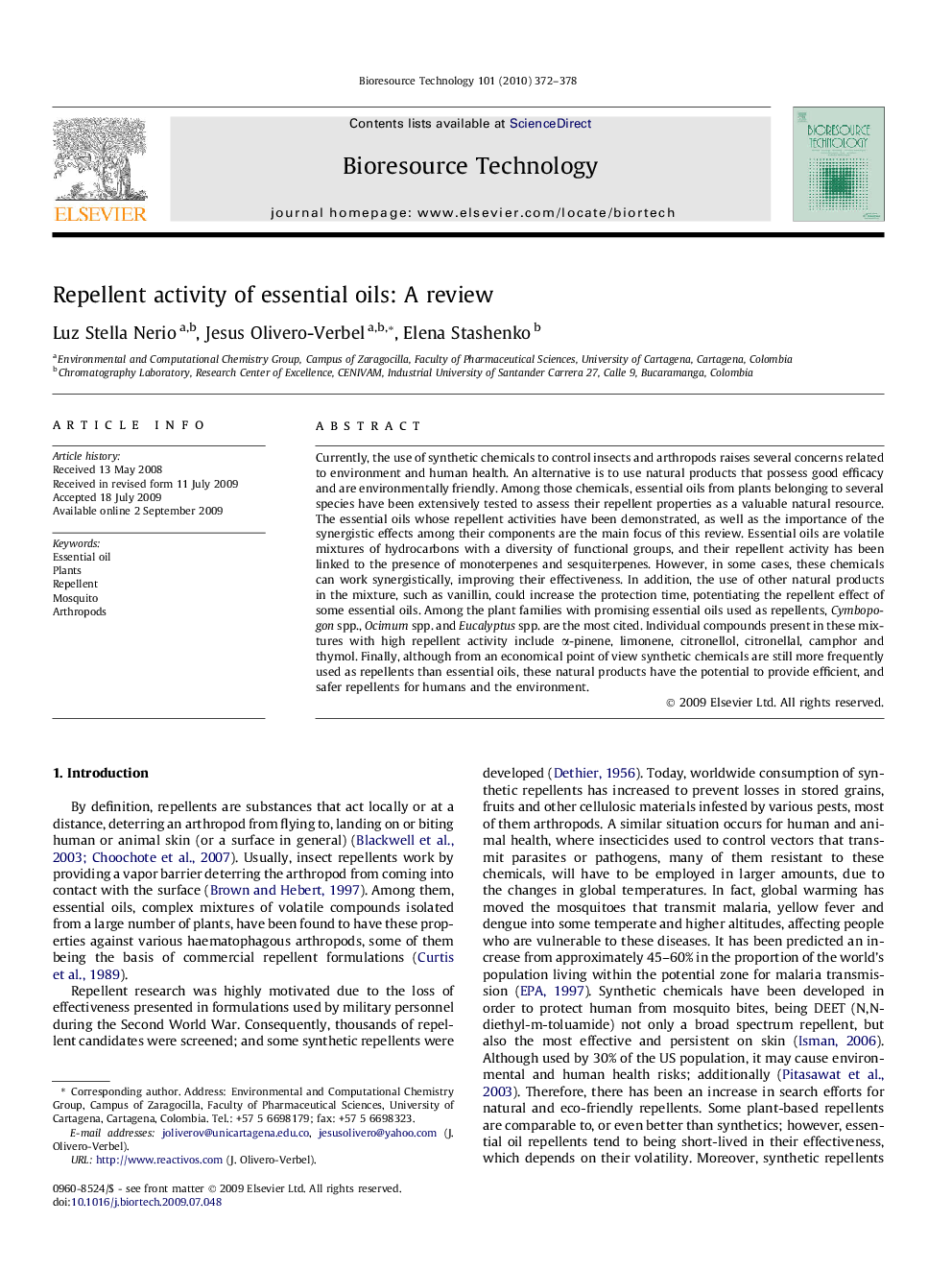| کد مقاله | کد نشریه | سال انتشار | مقاله انگلیسی | نسخه تمام متن |
|---|---|---|---|---|
| 683121 | 888995 | 2010 | 7 صفحه PDF | دانلود رایگان |

Currently, the use of synthetic chemicals to control insects and arthropods raises several concerns related to environment and human health. An alternative is to use natural products that possess good efficacy and are environmentally friendly. Among those chemicals, essential oils from plants belonging to several species have been extensively tested to assess their repellent properties as a valuable natural resource. The essential oils whose repellent activities have been demonstrated, as well as the importance of the synergistic effects among their components are the main focus of this review. Essential oils are volatile mixtures of hydrocarbons with a diversity of functional groups, and their repellent activity has been linked to the presence of monoterpenes and sesquiterpenes. However, in some cases, these chemicals can work synergistically, improving their effectiveness. In addition, the use of other natural products in the mixture, such as vanillin, could increase the protection time, potentiating the repellent effect of some essential oils. Among the plant families with promising essential oils used as repellents, Cymbopogon spp., Ocimum spp. and Eucalyptus spp. are the most cited. Individual compounds present in these mixtures with high repellent activity include α-pinene, limonene, citronellol, citronellal, camphor and thymol. Finally, although from an economical point of view synthetic chemicals are still more frequently used as repellents than essential oils, these natural products have the potential to provide efficient, and safer repellents for humans and the environment.
Journal: Bioresource Technology - Volume 101, Issue 1, January 2010, Pages 372–378